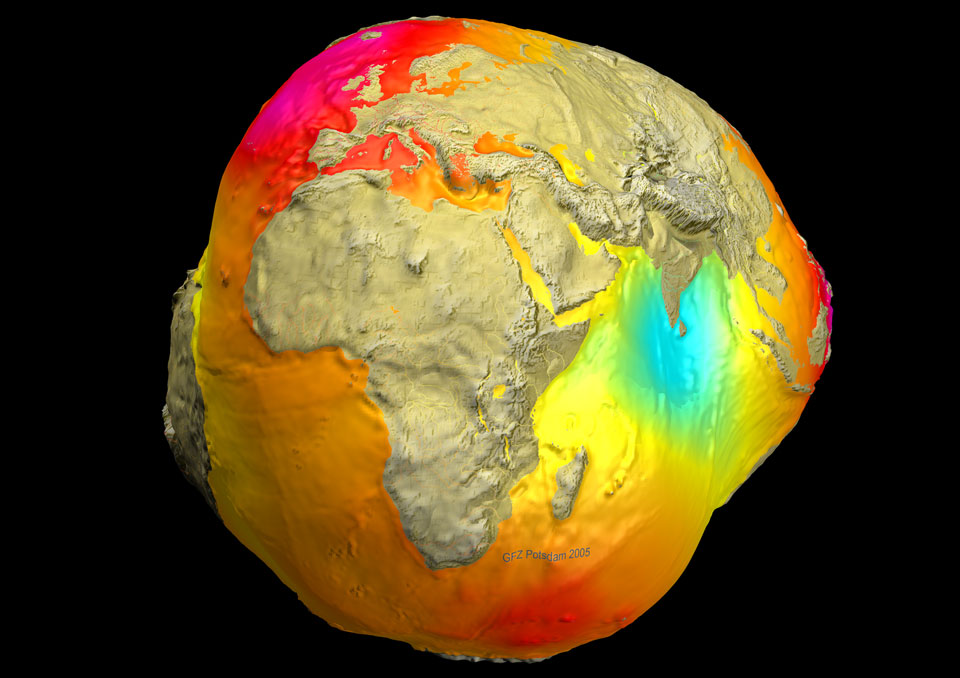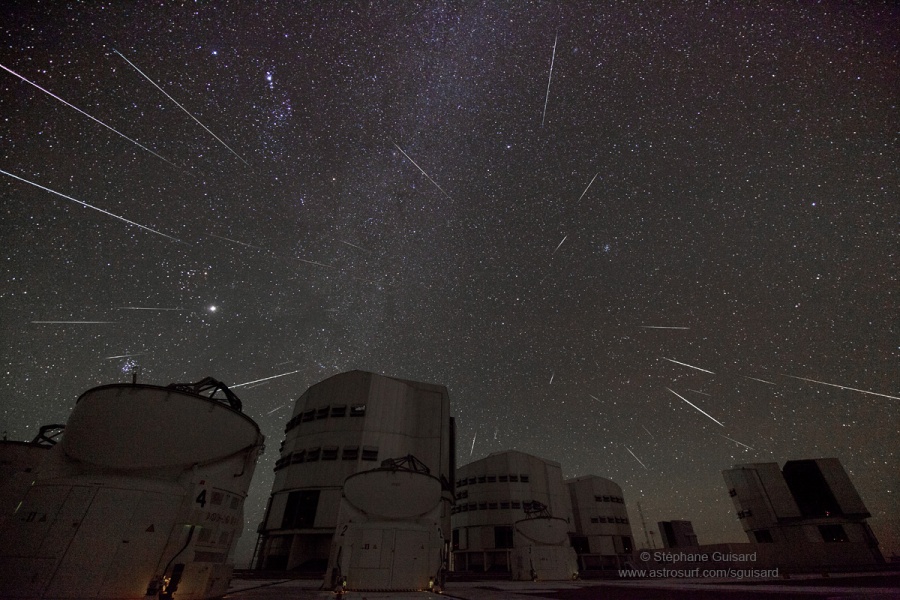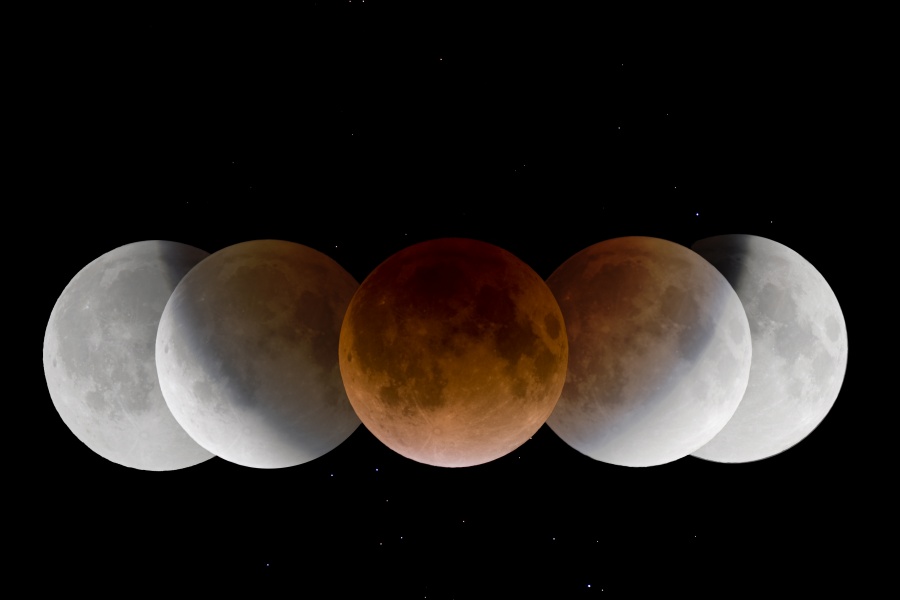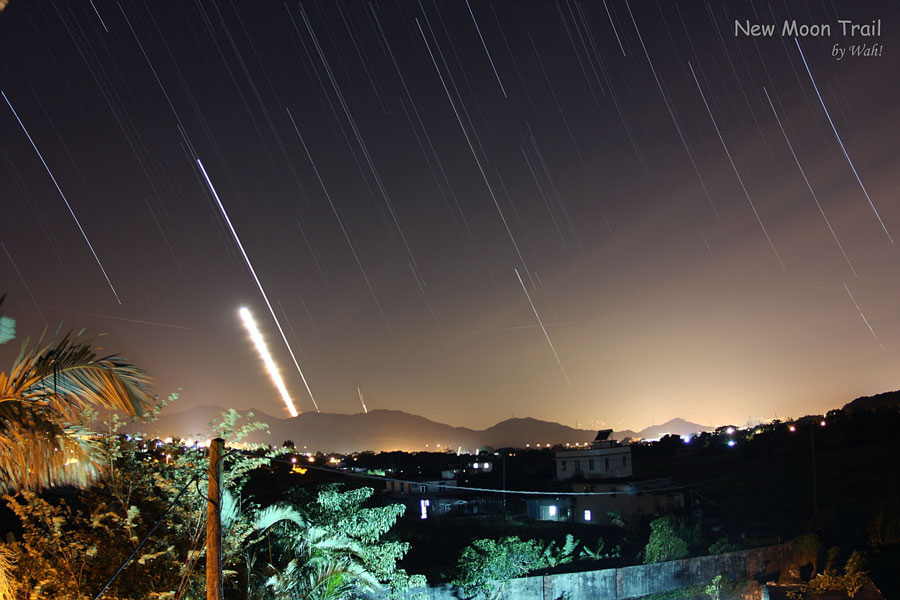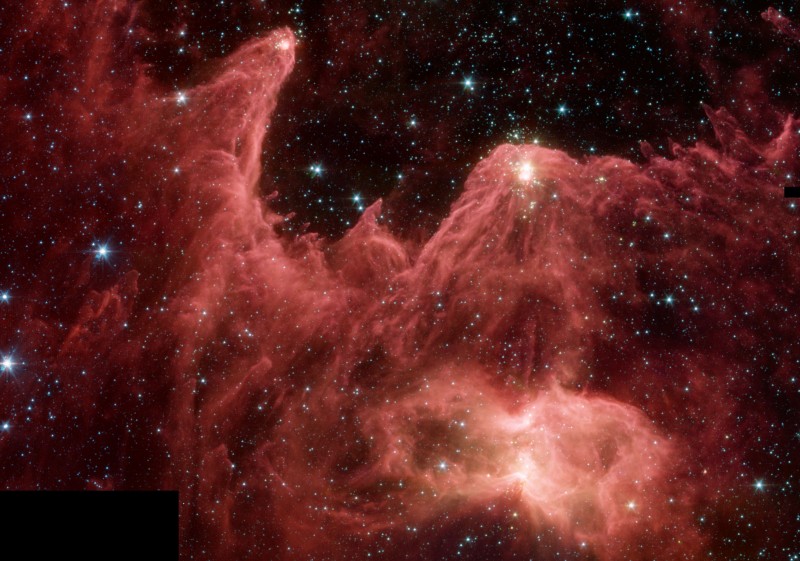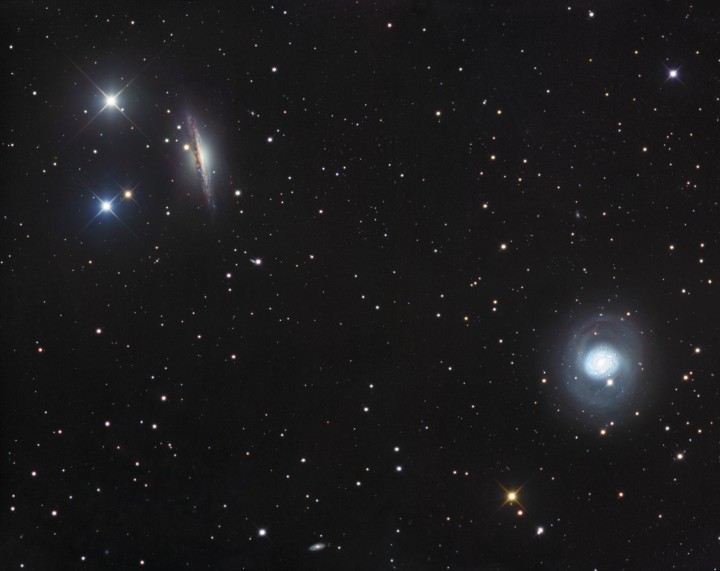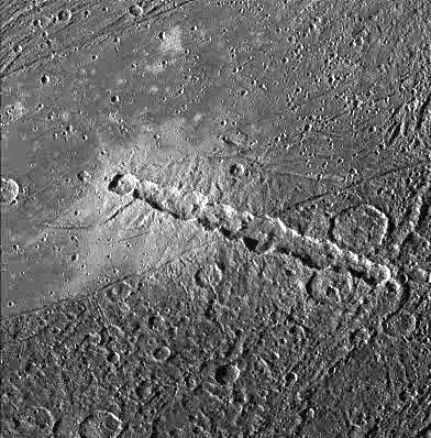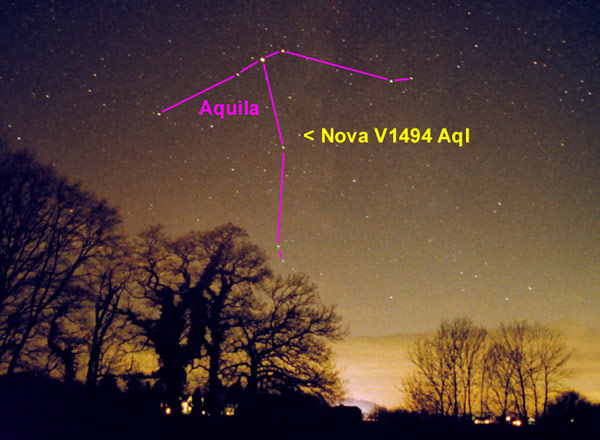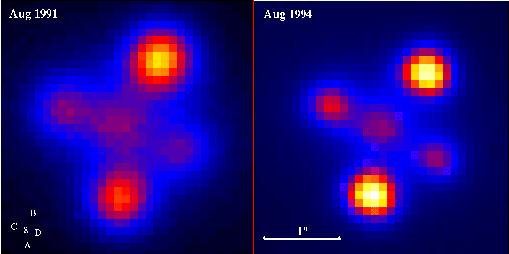| << Previous | Index | Next >> |
2014 Why do some places on Earth have higher gravity than others? Sometimes the reason is unknown. To help better understand the Earth's surface, sensitive measurements by the orbiting satellites GRACE and CHAMP were used to create a map of Earth's gravitational field. Since a center for studying these data is in Potsdam, Germany, and since the result makes the Earth look somewhat like a potato, the resulting geoid has been referred to as the Potsdam Gravity Potato. High areas on this map, colored red, indicate areas where gravity is slightly stronger than usual, while in blue areas gravity is slightly weaker. Many bumps and valleys on the Potsdam Gravity Potato can be attributed to surface features, such as the North Mid-Atlantic Ridge and the Himalayan Mountains, but others cannot, and so might relate to unusually high or low sub-surface densities. Maps like this also help calibrate changes in the Earth's surface including variable ocean currents and the melting of glaciers. The above map was made in 2005, but more recent and more sensitive gravity maps of Earth were produced in 2011.
2013 Although the phase of this moon might appear familiar, the moon itself might not. In fact, this gibbous phase shows part of Jupiter's moon Europa. The robot spacecraft Galileo captured this image mosaic during its mission orbiting Jupiter from 1995 - 2003. Visible are plains of bright ice, cracks that run to the horizon, and dark patches that likely contain both ice and dirt. Raised terrain is particularly apparent near the terminator, where it casts shadows. Europa is nearly the same size as Earth's Moon, but much smoother, showing few highlands or large impact craters. Evidence and images from the Galileo spacecraft, indicated that liquid oceans might exist below the icy surface. To test speculation that these seas hold life, ESA has started preliminary development of the Jupiter Icy Moons Explorer (JUICE), a spacecraft proposed for launch around 2022 that would further explore Jupiter and in particular Europa. Recent observations by the Hubble Space Telescope have uncovered new evidence that Europa, like Saturn's moon Enceladus, has ice venting from its surface.
2012 From a radiant point in the constellation of the Twins, the annual Geminid meteor shower rained down on planet Earth this week. Recorded near the shower's peak in the early hours of December 14, this skyscape captures Gemini's lovely shooting stars in a careful composite of 30 exposures, each 20 seconds long, from the dark of the Chilean Atacama Desert over ESO's Paranal Observatory. In the foreground Paranal's four Very Large Telescopes, four Auxillary Telescopes, and the VLT Survey telescope are all open and observing. The skies above are shared with bright Jupiter (left), Orion, (top left), and the faint light of the Milky Way. Dust swept up from the orbit of active asteroid 3200 Phaethon, Gemini's meteors enter the atmosphere traveling at about 22 kilometers per second.
2011 The dark, inner shadow of planet Earth is called the umbra. Shaped like a cone extending into space, it has a circular cross section most easily seen during a lunar eclipse. For example, last Saturday the Full Moon slid across the southern half of Earth's umbral shadow, entertaining moonwatchers around much of the planet. In the total phase of the eclipse, the Moon was completely within the umbra for 51 minutes. Recorded from Beijing, China, this composite eclipse image uses successive pictures from totality (center) and partial phases to trace out a large part of the umbra's curved edge. Background stars are visible in the darker eclipse phases. The result shows the relative size of the shadow's cross section at the distance of the Moon, as well as the Moon's path through Earth's umbra.
2010
Click to play embedded YouTube video.
Credit: NASA's GSFC, SDO AIA Team, ESA JHelioviewer Team
2009 Do stars appear dimmer when nearer the horizon? Yes -- atmospheric air absorbs and reradiates light, so that the greater the airmass through which one peers, the fainter an object will appear. Pictured above in a multi-frame image, stars, the planet Jupiter, and even the Moon show the horizon-dimming effects of Earth's nearly-transparent atmosphere. The image was taken in the evening about three weeks ago over Hong Kong, China. The brightest streak near the center is the setting Moon, while intermittent thin clouds sometimes dispersed moonlight into a larger halo. Jupiter sets just to the Moon's right. The dim steaks cutting across the image horizontally were caused by passing airplanes. The bright strange multi-pronged streak over the house is a helicopter taking off. An astute observer will also notice faint rays emanating from near the horizon. Their cause is unknown, but may be crepuscular rays caused by the Sun shining through gaps in thick clouds.
2008 Have you ever seen a sun pillar? When the air is cold and the Sun is rising or setting, falling ice crystals can reflect sunlight and create an unusual column of light. Ice sometimes forms flat, six-sided shaped crystals as it falls from high-level clouds. Air resistance causes these crystals to lie nearly flat much of the time as they flutter to the ground. Sunlight reflects off crystals that are properly aligned, creating the sun-pillar effect. In the above picture taken in 2007 January, a sun-pillar reflects light from a Sun setting over Lake Norman, North Carolina, USA.
2007 This fantastic skyscape lies at the eastern edge of giant stellar nursery W5, about 7,000 light-years away in the constellation Cassiopeia. An infrared view from the Spitzer Space Telescope, it features interstellar clouds of cold gas and dust sculpted by winds and radiation from a hot, massive star outside the picture (just above and to the right). Still swaddled within the cosmic clouds, newborn stars are revealed by Spitzer's penetrating gaze, their formation also triggered by the massive star. Fittingly dubbed "Mountains of Creation", these interstellar clouds are about 10 times the size of the analogous Pillars of Creation in M16, made famous in a 1995 Hubble Space Telescope view. W5 is also known as IC 1848 and together with IC 1805 it is part of a complex region popularly dubbed the Heart and Soul Nebulae. The Spitzer image spans about 70 light-years at the distance of W5.
2006 Large spiral galaxy NGC 1055 (top left) joins spiral M77 in this lovely cosmic view toward the constellation Cetus. The narrowed, dusty appearance of edge-on spiral NGC 1055 contrasts nicely with the face-on view of M77's bright nucleus and spiral arms. Both over 100,000 light-years across, the pair are dominant members of a small galaxy group about 60 million light-years away. At that estimated distance, M77 is one of the most remote objects in Charles Messier's catalog and is separated from fellow island universe NGC 1055 by at least 500,000 light-years. The mosaicked field is about the size of the full Moon on the sky and includes colorful foreground Milky Way stars (with diffraction spikes) along with more distant background galaxies.
2005 Near its northernmost declination, tonight's Full Moon will be a special one, arcing high in northern hemisphere skies. But a Full Moon won't occur on this calendar date for another 19 years, a period known as the lunar Metonic cycle. September 15th's lunar phase and date were notable too, marking the return of a gibbous Moon rising over the High Sierra mountains. That scene was captured in Ansel Adams' famous photograph Autumn Moon from Glacier Point, Yosemite National Park. Earlier this year, Texas State University physicists Donald Olson, Russell Doescher and students were able to pinpoint the location and (formerly uncertain) date the original Ansel Adams photo was taken - September 15, 1948. Accordingly, their astronomical detective work predicted that the lunar alignment and waxing gibbous phase would be repeated on Thursday, September 15, 2005, exactly three 19-year Metonic cycles later. On that day, about 300 photographers gathered at Glacier Point to record Ansel Adams' Autumn Moon encore.
2004 Pictured above, the path of the robot rover Spirit on Mars can be traced far into the distance. Spirit has now crossed kilometers of plains covered with rocks and sand, approached the lip of a crater 200-meters across, and climbed a series of hills. Spirit's path has been not only one of adventure but discovery. Landing inside vast Gusev crater near the beginning of this year, Spirit, along with its sister robot Opportunity across the planet, has uncovered key evidence for ancient Martian water. The recent discovery of goethite, a mineral only known to form on Earth in the presence of water, bolsters the case. Spirit and Opportunity continue to roam the red planet in search of different and more detailed clues to the unfolding ancient past of Mars.
2003 Open clusters of stars can be near or far, young or old, and diffuse or compact. Open clusters may contain from 100 to 10,000 stars, all of which formed at nearly the same time. Bright blue stars frequently distinguish younger open clusters. M35, pictured above on the upper left, is relatively nearby at 2800 light years distant, relatively young at 150 million years old, and relatively diffuse, with about 2500 stars spread out over a volume 30 light years across. An older and more compact open cluster, NGC 2158, is visible above on the lower right. NGC 2158 is four times more distant that M35, over 10 times older, and much more compact as it contains many more stars in roughly the same volume of space. NGC 2158's bright blue stars have self-destructed, leaving cluster light to be dominated by older and yellower stars. Both clusters are visible toward the constellation of Gemini -- M35 with binoculars and NGC 2158 with a small telescope.
2002 A virtual sky map like this would be of interest to astronomers studying gravitational microlensing. In microlensing, the gravity of stars near the line of sight can act to magnify the light of background objects such as distant stars, or quasars. Nowhere is this magnification greater than near a gravitational lensing caustic. In the above computer simulated map, caustics are discernible as the sharp bright curved lines. When a background quasar moves across a microlensing caustic, it can appear dramatically brighter. Many astronomers thought microlensing events practically immeasurable even twenty years ago, but within the past five years now hundreds have been found. Precise measurements of microlensing are now providing unique information about the composition and distribution of matter in galaxies and the universe. Some astronomers now predict that future microlensing searches might even isolate planets orbiting distant stars.
2001 This striking line of 13 closely spaced craters on Jupiter's moon Ganymede was photographed by the Galileo spacecraft in 1997. The picture covers an area about 120 miles wide and the chain of craters cuts across a sharp boundary between dark and light terrain. What caused this crater chain? Remarkably, the exploration of the Solar System, has shown that crater chains like this one are not unique, though they were considered mysterious until a dramatic object lesson was offered by comet Shoemaker-Levy 9. In 1994 many denizens of planet Earth watched as huge pieces of this torn comet slammed into Jupiter itself in a spectacular series of sequential impacts. It is very likely that similar torn comets from the early history of the Solar System are responsible for this and other crater chains.
2000 Using x-ray data from the orbiting Chandra Observatory along with radio data from the Very Large Array, a team of researchers has discovered evidence for a new example of one of the most bizarre objects known to modern astrophysics -- a neutron star. Embedded within supernova remnant IC443, the suspected neutron star appears as the reddish source at the lower right in this false-color x-ray image. Perhaps 20 kilometers across but with more mass than the Sun, this ultracompact object is the collapsed core of a massive star. The core collapsed when the star, located a reassuring 5,000 light-years away in the constellation Gemini, exploded long ago. How long ago? Judging from the characteristic bow wave shape of the x-ray nebula the researchers have estimated the speed of the neutron star as it plows away from the explosion site. Comparing the speed to the measured distance traveled from the center of IC443, the team, three high school students and a teacher from the North Carolina School for Science and Mathematics, calculated that the light from the supernova explosion arrived at Earth about 30,000 years ago.
1999 On December 1st, experienced observers patroling the night sky with binoculars noticed what seemed to be a new star in the constellation of Aquila (The Eagle). It wasn't really a new star though. A comparison with detailed skymaps revealed the amazing truth, there was a known star at that position in the sky ... its brightness had simply increased by about 70,000 times. The star, now fondly known to variable star observers as Nova V1494 Aquilae, continued to grow brighter for several days, becoming easily visible to the unaided eye before starting to slowly fade away. Its position within the constellation is indicated on this wide-angle picture taken on December 4th, near the time it was brightest. What would cause a star to undergo such a cataclysmic change? This "new star" appears to be a classical nova. Classical novae are thought to be interacting binary star systems in which one of the pair is a dense, hot white dwarf. Material from the companion falls onto the surface of the white dwarf, building up until it triggers a thermonuclear blast. A stunning increase in brightness and an expanding shell of debris result - but the binary system is likely not destroyed! Classical novae are believed to recur as the flow of material resumes and produces another outburst in perhaps hundreds of years time.
1998 The ridges on Europa may be caused by cold water volcanoes. Europa, one of the largest moons of Jupiter, has been the source of intense scrutiny since speculation increased of there being oceans beneath its icy surface. Currently the Galileo spacecraft orbiting Jupiter is on an extended mission designed, in part, to study Europa's surface in greater detail. The above image highlights features common to Europa's surface: pure blue water ice beneath lighter ridges that run for many kilometers. These ridges may result from volcanic cracks in the ice where emerging liquid water froze upon exposure to the cold of deep space. The reasons for the colors of the ridges remain uncertain.
1997 As 1997 fades, so does the Great Comet of 1997: Comet Hale-Bopp. Discovered even before the Great Comet of 1996, Comet Hale-Bopp became the brightest comet since 1976. Many will remember Comet Hale-Bopp as a comet with a coma so bright it could be seen by eye even when near the Moon. Others will remember spectacular photographs that appeared in magazines and on the web. Amateurs, inspired by the beauty of the comet, took most of these photographs. In particular, today APOD salutes Wally Pacholka, who took the above famous photograph. Mr. Pacholka reports that he repeatedly drove 150 miles to a national park, stayed up half the night, and took hundreds of photos while carefully waving a flashlight to momentarily illuminate the foreground. His equipment consisted only of a standard 35-mm camera which, for pointing accuracy, he piggybacked on a telescope bought at age 12 with money earned from a paper route.
1996 The famous "Einstein Cross" is a case where a single object is seen four times. Here a very distant QSO happened to be placed right behind a massive galaxy. The gravitational effect of the galaxy on the distant QSO was similar to the lens effect of an empty wine glass on a distant street light - it created multiple images. But stars in the foreground galaxy have been found to act as gravitational lenses here too! These stars make the images change brightness relative to each other. These brightness changes are visible on these two photographs of the Einstein Cross, taken about 3 years apart.
1995 The Sleeping Beauty galaxy may appear peaceful at first sight but it is actually tossing and turning. In an unexpected twist, recent observations have shown that the center of this photogenic galaxy is rotating in the opposite direction than the outer regions! Stranger still - there is a middle region where the stars rotate in the opposite direction from the surrounding dust and gas. The fascinating internal motions of M64, also cataloged as NGC 4826, are thought to be the result of a collision between a small galaxy and a large galaxy - where the resultant mix has not yet settled down.
| << Previous | Index | Next >> |
